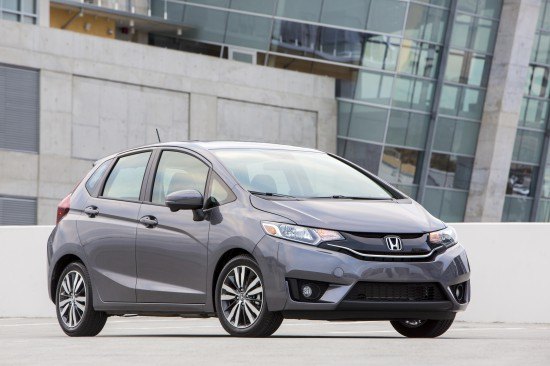The Top 10 Fastest-Growing Auto Nameplates In America: 2015 Q1
The Kia Sedona is the fastest-growing auto nameplate in the United States so far this year, nearly quintupling its first-quarter volume to 7670 units in 2015’s first three months.
We chose not to factor in the GMC Canyon, Chevrolet Colorado, and Audi A3, all of which actually recorded even year-over-year percentage improvements, not because they’re not selling at a far more prodigious pace than they did a year ago, but because they weren’t available in new or old form at this stage last year. Nor were the Kia K900 and Ram ProMaster, vehicles which would also have cracked the top ten.
At this time in 2014, Kia was finishing off its second-generation Sedona minivan. The new van, reviewed on TTAC earlier this month, didn’t truly take over until the fourth-quarter. Kia’s on track to sell more than 30,000 Sedonas in the U.S. this year, more than discontinued and/or forgotten vans like the Mazda 5 and Nissan Quest, but a far lower total than that which will be reported by the Toyota Sienna, Honda Odyssey, Dodge Grand Caravan, and Chrysler Town & Country.
RankAutoYOY % Change2015 Q12014 Q1#1 Kia Sedona+ 398%7,6701,539#2 Volkswagen Golf+139%12,7635,350#3 BMW 2-Series+ 138%2,147904#4 Mini Cooper+ 136%9,2953,946#5 Cadillac Escalade ESV+ 122%3,0731,383#6 Cadillac Escalade+ 117%4,8262,223#7 Lincoln Navigator+ 84%2,8751,561#8 Land Rover LR4+ 81%2,0651,144#9 Chevrolet Suburban+ 77%11,8766,724#10 Honda Fit+ 73%18,09410,444Volkswagen’s 139% Golf increase takes into account the conventional Golf’s 117% jump to 5559 sales, the GTI’s 108% increase to an even higher total of 5754 units, a 5900% improvement (to 840 sales) from the Golf R, plus 506 e-Golfs and the first 104 Golf SportWagens.
BMW’s official sales figures simply continued to be released as though the 1-Series simply became the 2-Series, which it basically did, albeit in new-gen form. Compared to the first-quarter of 2014, 2-Series/1-Series sales are up by 1243 units.
Jointly, the Cadillac Escalade and Escalade ESV are up 119% to 7899 sales, year-to-date. That figure is important, because Lincoln Navigator volume is reported with combined figures for the regular and long-wheelbase iterations.
Two more SUVs and a subcompact car fill out the top ten. Measured by units added, no vehicle in the top ten managed to beat the 7650-unit increase of the tenth-ranked Fit. On that note, none of these cars rank among the fastest-growing nameplates in America in terms of extra sales year-over-year. Mini, for example, which sold 4930 2-door Coopers and 3294 4-door Coopers along with 1071 Convertibles, Coupes, Roadsters, and Clubmans, isn’t about to challenge vehicles like the Honda Pilot (+14,850 sales in Q1) or Ford Mustang (+10,215), let alone the Chrysler 200 (+18,663) or Chevrolet Silverado (+18,937).
Timothy Cain is the founder of GoodCarBadCar.net, which obsesses over the free and frequent publication of U.S. and Canadian auto sales figures.
More by Timothy Cain
Latest Car Reviews
Read moreLatest Product Reviews
Read moreRecent Comments
- SCE to AUX "...to help bolster job growth and the local economy"An easy win for the politicians - the details won't matter.
- Kjhkjlhkjhkljh kljhjkhjklhkjh so now we will PAY them your tax money to build crappy cars in the states ..
- SCE to AUX Yes, I'll miss it, and it doesn't make sense to kill off your 3rd-best seller. 2023 was its best year since 2018.
- SCE to AUX This was the same car I had (05 xB, stick, "camouflage" color) for 7 years - great car.We called ours "The Lunchbox". I added aftermarket wheels, and the 3rd-party cruise control the dealers could install.It suffered only two failures: bad window switch in week 2 (dealer fixed in 1 hour), bad trailing O2 sensor (fixed myself for $70). Fuel economy was always 28-34 mpg.It was a potential death trap, and ride quality became unbearable after 2 hours. I once did a 10-hour round trip in it and could barely walk after.Traded it for a 2012 Leaf, which was a better car in some ways.
- Bd2 The "e" nomenclature signifies the e-ATPs which BMW is pursuing.



































Comments
Join the conversation
Not that FCA is listening or cares, but I consider the Sedona because I can get real freaking captain's chairs in the second row, and, it's relatively cheap compared to the Oddy (the Sienna is a no-go, Quest, I dunno, will have to check it out). Those Dodge/Chrysler fold-in-floor seats are torture on a trip, and you can't option up to real seats in the GC or T&C. Or, I'll just keep nursing the 2001 T&C along, I guess.
5 SUVs - four of them monstrous in size, and the Sedona which gets SUV grade MPG. The impact of low fuel prices - behold!